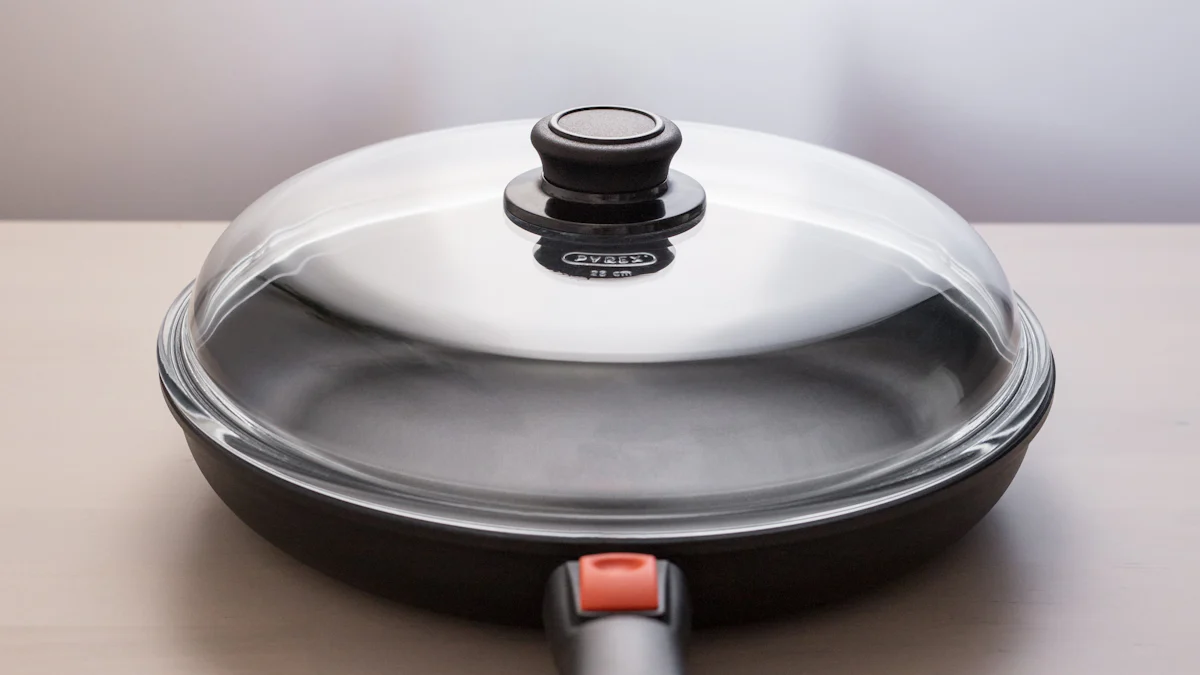Tempered Glass vs. Ordinary Glass for Cookware Lids: Which Is Safer and More Durable?

When choosing cookware lids—whether for pots, pans, or specialty kitchen tools—the type of glass used can significantly impact safety, durability, and performance. Tempered glass and ordinary glass are two common materials, but they differ drastically in strength, heat resistance, and safety. In this guide, we’ll break down their differences, focusing on cookware applications, and help you decide which is best for your kitchen.
What Is Ordinary Glass?
Ordinary glass (annealed glass) is a basic silicate material made by cooling molten glass slowly to relieve internal stresses. While cost-effective, it has limitations:
- Strength: Prone to cracking under sudden temperature changes (thermal shock) or impact.
- Safety: Shatters into sharp, jagged shards, posing injury risks.
- Heat Resistance: Typically withstands up to 150–200°C (302–392°F), making it unsuitable for high-heat cooking like oven use.
Common Uses: Decorative lids, low-heat food covers, or budget-friendly cookware.
What Is Tempered Glass?
Tempered glass is annealed glass treated with controlled thermal or chemical processes to increase strength. Key features:
- Strength: 4–5x stronger than ordinary glass. Resists impacts and scratches.
- Safety: Breaks into small, blunt granules (per ANSI Z97.1 safety standards), reducing injury risks.
- Heat Resistance: Withstands temperatures up to 300°C (572°F), ideal for oven-safe lids.
Common Uses: Oven-safe cookware lids, stovetop pans, and high-traffic kitchen tools.
Tempered Glass vs. Ordinary Glass: Key Differences
| Factor | Tempered Glass | Ordinary Glass |
|---|---|---|
| Durability | Resists cracks, scratches, impacts | Easily chips or cracks |
| Thermal Shock Resistance | Handles rapid temp changes (e.g., fridge to oven) | Likely to shatter under thermal stress |
| Safety | Shatters into harmless granules | Breaks into sharp shards |
| Heat Tolerance | Up to 300°C (572°F) | Up to 200°C (392°F) |
| Cost | 20–40% more expensive | Budget-friendly |
Cookware Lid Applications: Which Glass Is Better?
1. Stovetop Pan Lids
- Tempered Glass Lid: Optimal for frying pans or saucepans. Its heat resistance allows monitoring food without lifting the lid, retaining moisture and heat. Brands like Pyrex® use tempered glass for this purpose.
- Ordinary Glass Lid: Avoid for high-heat frying. Suitable for simmering at low temperatures.
2. Oven-Safe Cookware Lids
- Tempered Glass: The only safe choice for oven use (e.g., casserole dishes, Dutch ovens). It withstands baking/broiling without cracking.
- Ordinary Glass: Not oven-safe—risk of shattering at high temps.
3. Specialty Lids (e.g., Slow Cookers, Tea Kettles)
- Tempered Glass: Preferred for steam-heavy appliances. Resists constant moisture and heat cycling.
- Ordinary Glass: May degrade over time due to steam exposure.
Pros and Cons of Tempered Glass Lids
✅ Pros:
- Oven-, microwave-, and dishwasher-safe.
- Scratch-resistant surface stays clear for years.
- Safety-compliant for families with kids.
❌ Cons:
- Heavier than ordinary glass or silicone lids.
- Cannot be cut or resized after tempering.
When to Choose Ordinary Glass Lids
Ordinary glass lids may suffice if:
- You need a lightweight, inexpensive option for low-heat cooking.
- The lid is purely decorative (e.g., cake domes).
- The cookware is used infrequently.
- Find a reliable and professional supplier. (Ningbo Xianghai Kitchenware have been supplied cookware lids for more than 15 years, have various cookware lids for various sizes.)
Safety Tips for Glass Cookware Lids
- Avoid Extreme Temperature Shocks: Never place a hot glass lid on a cold surface or add cold water to a hot lid.
- Check for Oven-Safe Labels: Only tempered glass lids are oven-compatible.
- Inspect for Damage: Cracks or chips compromise structural integrity—replace immediately.
Industry Insights: Why Most Premium Brands Use Tempered Glass
A 2022 study by Global Cookware Trends found that 78% of high-end cookware brands use tempered glass lids due to:
- Consumer Demand: 65% of buyers prioritize safety and durability over cost.
- Warranty Benefits: Tempered glass has lower breakage rates, reducing warranty claims.
- Versatility: Compatible with all cooktops (induction cooker, gas stove, electric stove).
Post time: Mar-28-2025
